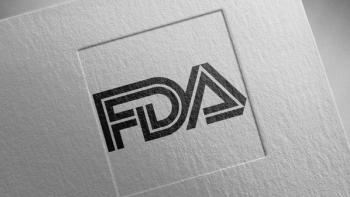
EASD: Average Blood Glucose Reflects Real Life Glycemia
AMSTERDAM -- Average blood glucose appears to accurately reflect the daily variations in glycosylated hemoglobin that patients experience, and it may become a new glycemia measure that's easier for patients to grasp than HbA1c.
AMSTERDAM, Sept. 18 -- Average blood glucose appears to accurately reflect the daily variations in glycosylated hemoglobin that patients experience, and it may become a new glycemia measure that's easier for patients to grasp than HbA1c.
That's according to investigators who reported interim data from a study designed to determine whether an average glucose level, derived from HbA1c values, would accurately reflect what goes on day-to-day in patients' bloodstreams.
"These results are even better than we expected and that we could hope for," said Robert Heine, M.D., of the European Association for the Study of Diabetes (EASD), at the group's annual meeting here. Dr. Heine is also with the VU Medical Center in Amsterdam.
In August, the EASD, the American Diabetes Association, the International Federation of Clinical Chemistry and Laboratory Medicine (IFCC), and the International Diabetes Federation released a consensus statement embracing a new standard for measuring and reporting HbA1c.
The groups also stated, conditionally, that "if the ongoing 'average plasma glucose' fulfills it's a priori specified criteria, an HbA1c-derived average glucose (ADAG) value calculated from the HbA1c result will also be reported as an interpretation of the HbA1c results."
When the reference standard changes were first announced, there was concern among physicians that patients would be confused by the new measurement, which would effectively change an HbA1c of less than 7% (the current ADA standard) from an "A" to a "C-," or as ADA President John Buse, M.D., put it, they'd be confused to find that "53 mmol/mol is the new 7%."
To prevent that confusion, the organizations agreed on a way to translate the new measurement into a uniform reference number: the IFCC reference number, expressed in mmol/mol, which can then be translated into the familiar current HbA1c values using simple mathematic formulas, and also into the more patient-friendly average blood glucose number.
The investigators then tested the accuracy of the average blood glucose number in an international study. David M. Nathan, M.D., of Harvard and Massachusetts General Hospital, the coordinating center for the trial, today chaired a session in which those updated results were announced.
Those results show that among 427 patients and healthy volunteers (each of whom had thousands of blood glucose monitoring results recorded over four months) there was at least a 90% correlation between the new reference standard and the average blood glucose level.
That's good news, because the average blood glucose number may be easier to grasp for patients who are accustomed to daily finger sticks and blood glucose monitoring anyway, Dr. Nathan said.
The International A1c-AG study was conducted at 10 centers in North America, Europe, and Africa, in an attempt to determine, as accurately as possible, the relationship between average blood glucose levels and HbA1c.
The study had recruited most of its goal of 700 volunteers, but one center had to drop out, because of technical problems. The investigators reported blood glucose data on 282 patients with type 1 diabetes, 140 with type 2, and 60 healthy volunteers with normal glycemia.
The patients' HbA1cs were measured in a central laboratory in the Netherlands using the new reference standard monthly for four months, with patients using a combination of continuous glucose monitoring for two to three days for each of the four months, plus frequent fingersticks equivalent to daily self-monitoring.
Using regression analysis, the investigators found that the standard error from the mean was only 0.83 mmol/mol, indicating that the average blood glucose measure correlated strongly with the new reference standard.
Dr. Nathan said that the relationship between HbA1c as measured by the new standard and average blood glucose appears to be the same for those with type 1 and type 2 disease, and for men and women.
The investigators expect to publish final results of the study later this year or in early 2008.
Newsletter
Enhance your clinical practice with the Patient Care newsletter, offering the latest evidence-based guidelines, diagnostic insights, and treatment strategies for primary care physicians.






















































































































































































































































































